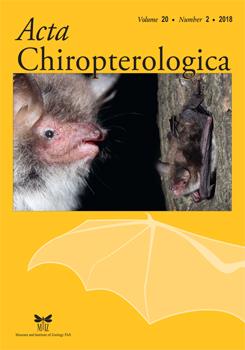Natterer's bat Myotis nattereri is one of the least known European bats. Understanding its patterns of movement between roosts is an important aspect of assessing the relative value of different types of roost for conservation of the species. We determined patterns of movement of Natterer's bat between roosts by radio-tracking successive animals from the same colonies during summer (May to September). For one maternity colony comprising 65 adult females, the attic of a large mediaeval church was the main roost site, accounting for 88% of radio-located bat days. The two other maternity colonies tracked comprised about 35 adult females each and used from 15 to 25 roost sites, some containing multiple roosts. For these two colonies, up to six roost sites per colony accounted for about 80% of bat occupancy days in any one summer and for each colony, roost home ranges for roosts used by subgroups of at least two bats together covered 0.4 km2. Although bats made frequent movements between roosts there was no apparent interchange between adjacent colonies and no overlap in the range used by adjacent colonies. Bats changed roosts every 3.0 days on average, moving 510 m (median) to an alternative roost. They departed late and returned early to roosts. Colonies assembled or disintegrated into larger or smaller groups occupying diverse roosts during summer, but there was high social cohesion between colony members. Bats that separated into subgroups from mid-summer (mid-July) onwards later roosted together again. Natterer's bat exhibits high behavioural flexibility in the type of roosts used: of two adjacent maternity colonies, one used mostly tree roosts and the other mostly buildings. However, both roosted mainly in roofs during early summer (late May to mid-July). Tree roosts were significantly preferred to those in buildings when ambient external maximum temperatures were ≥ 30°C or mean temperatures fell below 14°C. Natterer's bat appears to depend on the availability of a number of roosts of different types. Parturition roosts, roosts in heavily timbered barns and roosts within core roosting areas, potentially up to 1.2 km distant from the parturition roost, should have highest conservation priority but conservation management should guard against any roost loss.
How to translate text using browser tools
14 February 2019
The Itinerant Natterer: Dynamics of Summer Roost Occupancy by Myotis nattereri (Chiroptera, Vespertilionidae)
Peter G. Smith,
Paul A. Racey
ACCESS THE FULL ARTICLE

Acta Chiropterologica
Vol. 20 • No. 2
December 2018
Vol. 20 • No. 2
December 2018
behavioural flexibility
Myotis nattereri
radio-telemetry
roost switching
roost temperature
roosting behaviour
summer roosts




